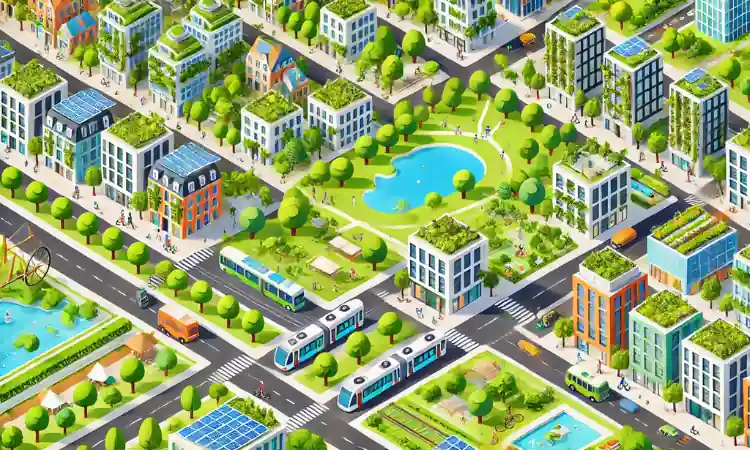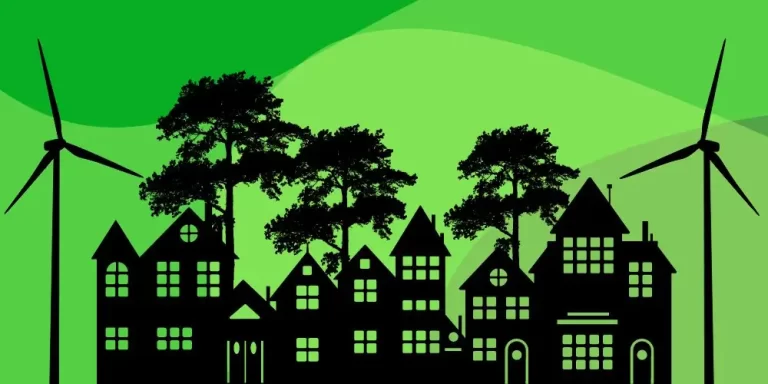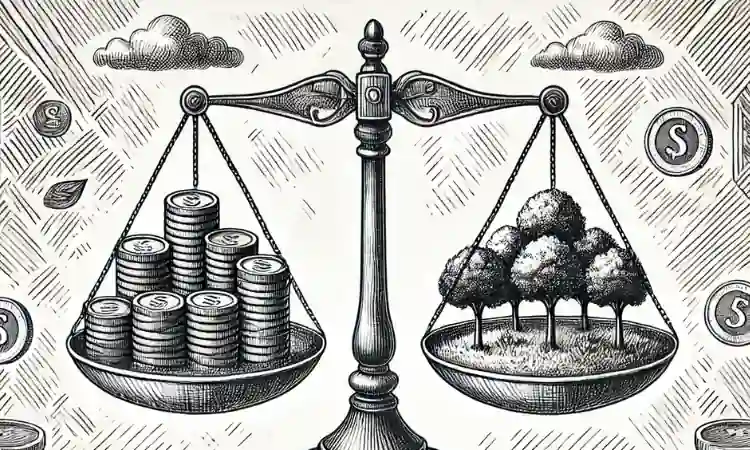What Are Sustainable Cities? Key Features Explained
In today’s rapidly urbanising world, sustainable cities has emerged as a vital solution to environmental degradation, resource depletion, and social inequality.
Here we’ll delve into what sustainable cities are, their key features and the benefits they offer. We’ll also cover the challenges they face, along with some real-world examples of successful sustainable cities.
What is a Sustainable City?

A sustainable city is an urban area designed with the goal of creating an environmentally friendly, economically viable, and socially inclusive community.
The concept revolves around balancing urban growth with the native environment. In doing so, the aim is to ensure that natural resources are managed responsibly, whilst ensuring the meetings of current and future generations are not harmed.
Renewable energy, efficient public transportation, waste reduction, and smart urban planning are all integrated to minimise the city’s ecological footprint and foster a high quality of life for their residents
Key Features of a Sustainable City

Sustainable cities incorporate a range of innovative features and practices. These features promote long-term resilience and liveability. Key elements include:
1. Green Infrastructure and Urban Planning
2. Renewable Energy and Energy Efficiency
3. Sustainable Transportation
4. Waste and Water Management
5. Smart Technology & Data-Driven Governance
Benefits of Sustainable Cities

Transitioning to a sustainable urban model offers numerous advantages to the city and its population. These span a range of environmental, economic, and social aspects:
Environmental Benefits
Economic Benefits
Social Benefits
Challenges to Developing Sustainable Cities

While the vision of sustainable cities is inspiring, several obstacles must be overcome to achieve these goals:
1. High Initial Investment
Developing sustainable infrastructure often requires significant upfront costs.
Securing funding for green technologies, renewable energy projects, and modern public transportation can be challenging, especially for cities with limited budgets.
2. Policy and Regulatory Barriers
Supportive policies and regulations are essential to establish a sustainable city.
However, bureaucracy, outdated urban planning practices, and conflicting interests among stakeholders can often impede progress.
3. Technological Integration
Implementing smart city solutions requires robust technological infrastructure and expertise.
Integrating new systems with existing urban frameworks can however be complex, and may encounter resistance from those unfamiliar with modern technologies.
4. Social and Cultural Challenges
Transitioning to sustainable lifestyles inevitably involves changing habits and mindsets.
Public resistance to change, lack of awareness, and insufficient community engagement can hinder the implementation of sustainable practices.
5. Legacy Infrastructure
Many cities are burdened with aging infrastructure that is not designed to support modern sustainable technologies.
Retrofitting old buildings and transport networks are prime examples. Enhancing them simply to meet current standards, let alone advance to a sustainability compatible position, can be both costly and time-consuming.
Examples of Sustainable Cities Around the World

Numerous cities have taken bold steps toward sustainability, each serving as a model for others to emulate. None are perfect, but the below are some notable examples of those that have taken great strides forward:
1. Copenhagen, Denmark
Copenhagen is often hailed as one of the world’s leading sustainable cities.
The city has invested heavily in cycling infrastructure, renewable energy (especially wind power), and innovative waste management systems. You’ll also see quite a few green roofs in place.
Copenhagen showcases how comprehensive urban planning can drive environmental progress; which will no doubt progress further under their developing Climate Plan 2035.
2. Amsterdam, Netherlands
Amsterdam is renowned for its extensive network of bike lanes, integrated public transportation, and smart urban planning initiatives. Travel to the city and you’ll immediately gain a feel for the importance they place upon sustainable travel.
The city’s commitment to sustainability is reflected in its numerous green projects, such as eco-friendly housing and sustainable water management systems. It is fair to say the city has established itself as a pioneer in urban innovation.
3. Singapore
Singapore has earned a reputation as a “City in a Garden” by seamlessly blending urban development with nature.
Abundant green spaces, cutting-edge smart technologies, and effective water & waste management strategies are all in place. In doing so, Singapore has successfully managed to balance rapid economic growth with sustainable practices.
You can learn more through Singapore’s Green Plan 2030.
Sustainable Cities: Key to Our Future

Sustainable cities are more than just a trending term, they represent a necessary shift towards a more resilient, equitable, and environmentally responsible future.
By integrating green technologies, efficient infrastructure, and community-focused planning, sustainable cities offer a blueprint for mitigating climate change while enhancing urban living.
As more cities around the world adopt these principles, the path to a greener future becomes clearer, promising healthier environments and thriving communities for generations to come.
To support you further, you will also find the following resources useful to add context around the progress towards a sustainable future:
What is Sustainability: Fundamentals Explained
Economic Sustainability: Benefits & Challenges Explained
Social Sustainability: Benefits & Challenges In Focus
Urban Green Spaces: Sustainability Benefits & Challenges
Lastly, we’d love to hear about your own thoughts on sustainable cities and any great examples you’ve come across. Let us know in the comments section below or through our social media channels, linked at the bottom of this page.





